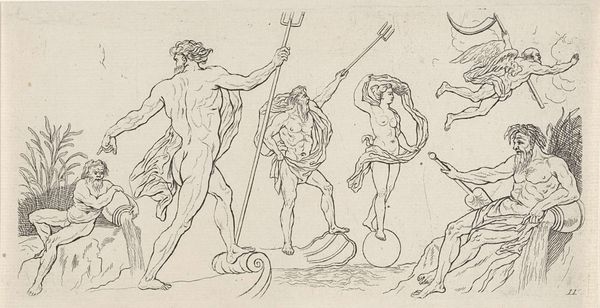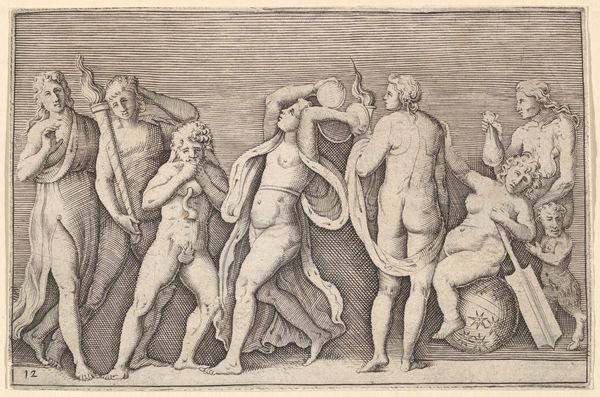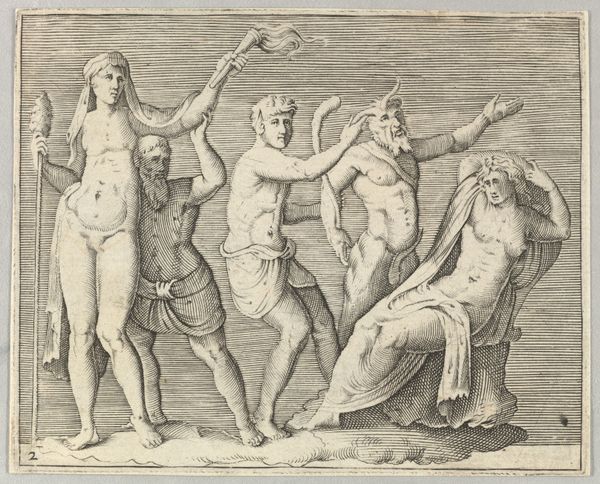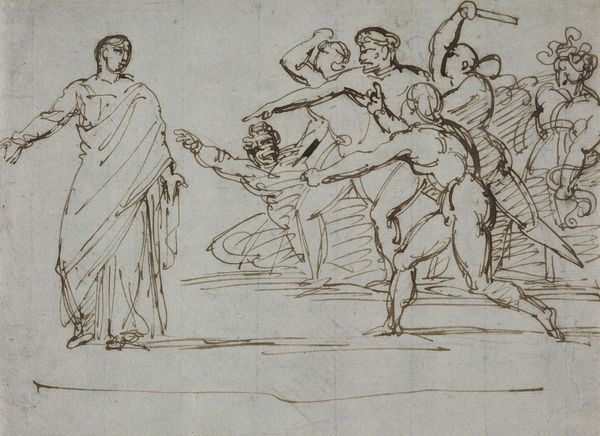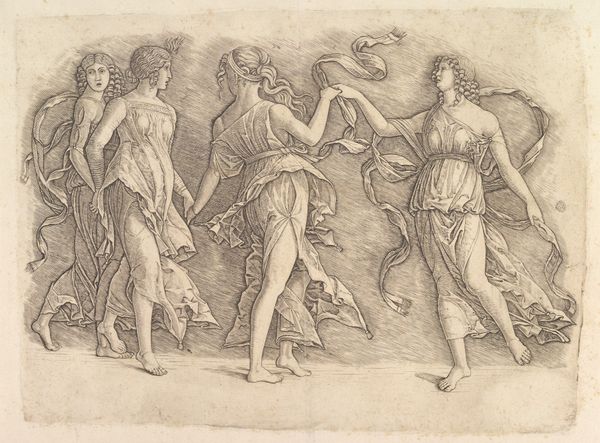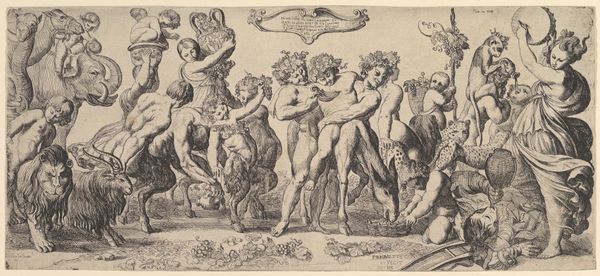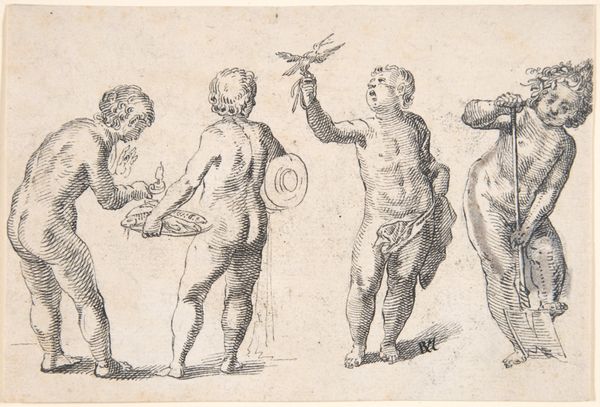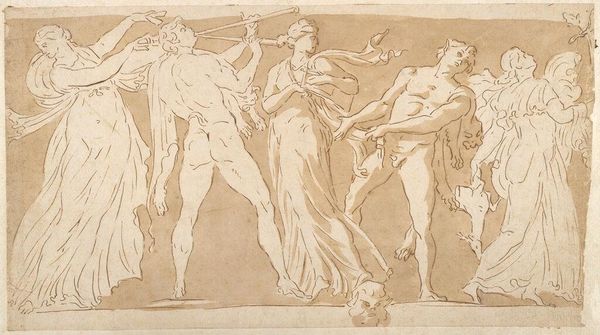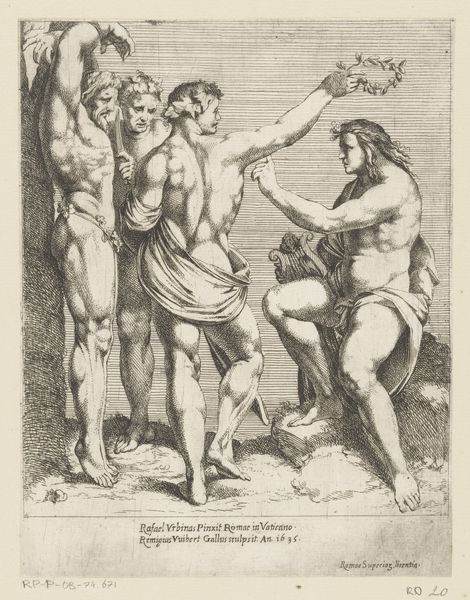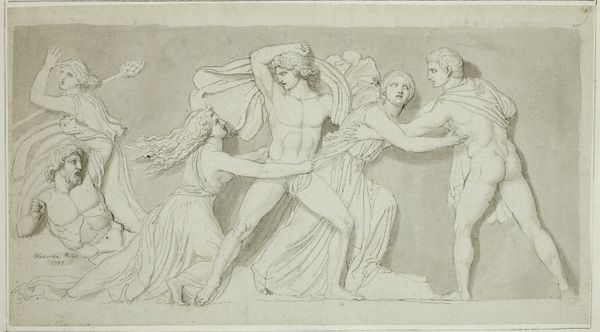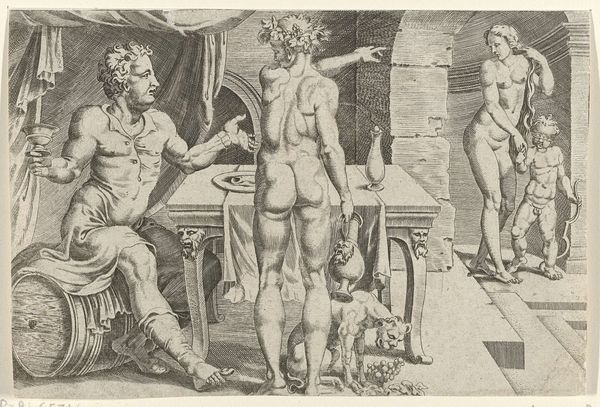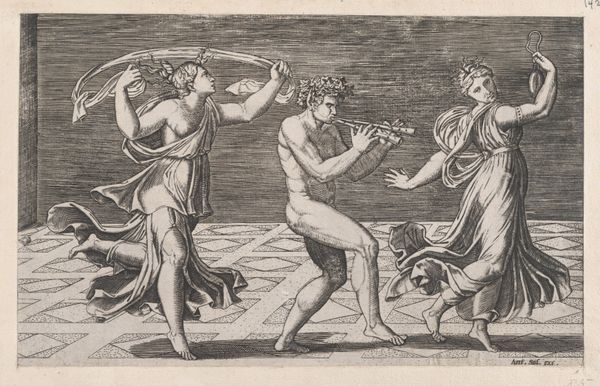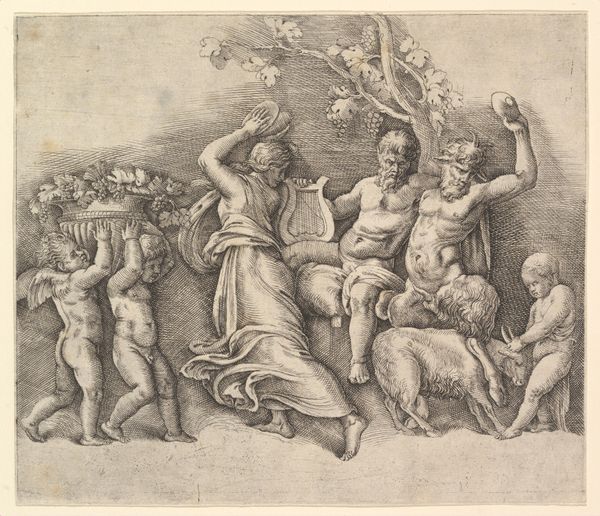
drawing, paper, ink
#
drawing
#
baroque
#
figuration
#
paper
#
ink
#
history-painting
#
academic-art
#
nude
Dimensions: height 96 mm, width 189 mm
Copyright: Rijks Museum: Open Domain
Editor: This is "Studies van verschillende mannelijke figuren," created sometime between 1710 and 1767 by Leonard Schenk. It’s an ink drawing on paper currently held at the Rijksmuseum. It feels almost like a page torn from a sketchbook, filled with these dynamic figures. What's striking to you about this work? Curator: Well, from a historical perspective, this drawing speaks volumes about artistic training during the Baroque era. Notice how the figures are all male nudes in various poses? These "academies," as they were known, were foundational exercises. Students relentlessly copied classical sculptures and live models to master anatomy, proportion, and drapery. It was about instilling an artistic vocabulary steeped in the classical tradition and establishing a certain status. Editor: So, it’s less about individual expression and more about mastering established conventions? Curator: Precisely. Consider the societal structures supporting art at the time. The academy system, patronized by the wealthy and powerful, dictated artistic norms. Success meant mastering this visual language to gain commissions and prestige. Think about what kind of stories this art had to tell, in other words who did this art need to speak for. Editor: I see...So the political climate is the backdrop that gives the work some weight. Did the public engage with these sorts of 'studies' in Schenk's time, or was it strictly confined to the studios? Curator: Prints after drawings such as this had a life of their own, of course. They allowed broader dissemination, functioning as source material within the increasingly international visual culture. It’s an interesting interplay between private study, artistic labor, and the shaping of a shared, "learned" visual sphere. Editor: That gives me a lot to think about in terms of artistic development at that time! This feels much bigger than a mere collection of sketches, thanks to understanding it in the light of art politics and the place of artwork inside the cultural moment. Curator: Absolutely. Context transforms how we understand what an artist, such as Leonard Schenk, did and why, allowing us to unpack some of the ways Baroque artistry operates within that world.
Comments
No comments
Be the first to comment and join the conversation on the ultimate creative platform.
